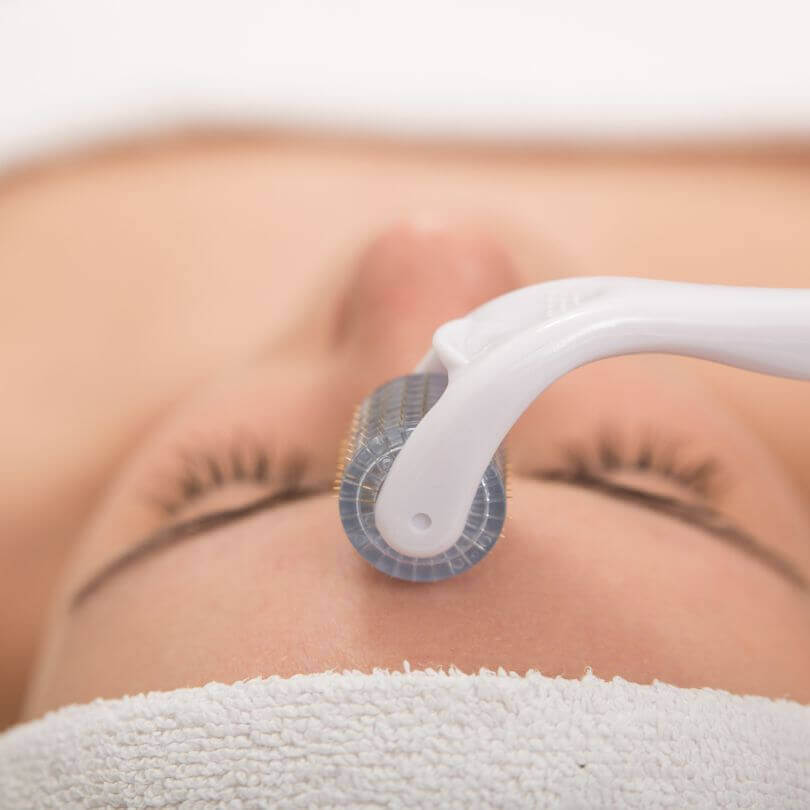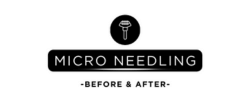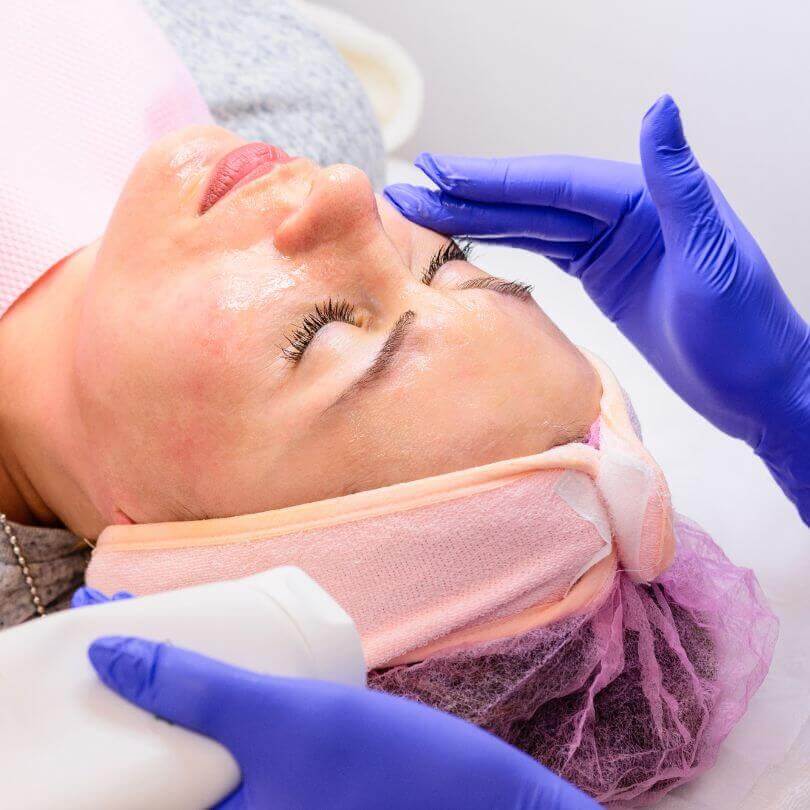When it comes to treating stubborn acne scars, microneedling has emerged as a popular and effective solution. But how many sessions of microneedling are necessary to achieve noticeable results? If you’re eager to bid farewell to those imperfections, you’ll be pleased to know that this article will provide you with valuable insights and guidance on determining the optimal number of microneedling sessions required to fade away those pesky acne scars. So, get ready to discover the journey towards flawless skin!

Understanding Microneedling for Acne Scars
Microneedling is a popular and effective treatment method for acne scars. It involves the use of a device with tiny needles to create small punctures in the skin’s surface. These micro-injuries stimulate the body’s natural healing process, leading to the production of collagen and elastin, which helps in improving the appearance of acne scars.
What is Microneedling?
Microneedling, also known as collagen induction therapy, is a minimally invasive procedure that aims to improve the texture and appearance of the skin. The procedure is performed using a device called a derma roller or microneedling pen, which contains tiny needles. These needles create controlled injuries in the skin, prompting the body to produce more collagen and regenerate new skin cells.
How does Microneedling Work?
Microneedling works by creating micro-injuries in the skin, which trigger the body’s natural healing response. When the needles penetrate the skin, they break up scar tissue and stimulate the production of collagen, a protein that helps in skin regeneration. As the skin heals, it becomes smoother and more evenly toned, reducing the appearance of acne scars.
Why is Microneedling Effective for Acne Scars?
Microneedling is particularly effective for acne scars due to its ability to address the underlying cause of the scarring. Acne scars occur when the skin’s natural healing process is disrupted during the inflammatory response to acne. By stimulating collagen production and promoting skin regeneration, microneedling helps to minimize the appearance of scars and improve overall skin texture.

Factors Affecting the Number of Microneedling Sessions
Several factors can influence the number of microneedling sessions required to achieve optimal results for acne scars.
Severity of Acne Scars
The severity of your acne scars plays a significant role in determining the number of microneedling sessions needed. Deeper and more extensive scars may require more sessions to achieve satisfactory results.
Skin Type and Condition
The type and condition of your skin can also impact the number of microneedling sessions needed. Different skin types respond differently to treatment, and certain skin conditions may require additional sessions for optimal results.
Individual Healing Response
Every individual’s healing response is unique, and this can affect the number of sessions required for successful scar improvement. Some individuals may heal and regenerate skin cells more quickly, while others may require additional sessions for noticeable improvement.
Overall Health
Your overall health can also influence the number of microneedling sessions needed. A healthy lifestyle, proper nutrition, and good skincare routine can contribute to better healing and more successful results.
Consulting with a Dermatologist
Before undergoing microneedling for acne scars, it is crucial to consult with a qualified dermatologist. They will evaluate your skin condition, discuss your treatment goals, and develop a customized treatment plan tailored to your specific needs.
Importance of Professional Evaluation
A professional evaluation is essential to determine the suitability of microneedling for your acne scars. A dermatologist’s expertise will help assess the severity of your scars, identify any underlying skin conditions, and recommend the most appropriate treatment approach.
Customized Treatment Plan
Based on their evaluation, a dermatologist will create a customized treatment plan that takes into account the specific characteristics of your acne scars and your individual needs. This ensures that you receive the most effective treatment and the best possible results.
Determining the Number of Sessions
During your consultation, the dermatologist will discuss the estimated number of microneedling sessions required to achieve your desired outcome. This will depend on factors such as the severity of your acne scars, your skin’s response to treatment, and your overall health. The dermatologist may also adjust the treatment plan as necessary based on your progress and response to treatment.

Typical Range of Microneedling Sessions
The number of microneedling sessions needed for acne scars can vary from person to person. However, there is a typical range that can serve as a guideline.
Minimum Number of Sessions
The minimum number of microneedling sessions for acne scars is usually around 3-4 sessions. This number allows for significant improvement in the appearance of scars and the overall texture of the skin. However, individual factors and scar severity may require additional sessions.
Average Number of Sessions
The average number of microneedling sessions for acne scars typically ranges from 4-6 sessions. This range is often sufficient to achieve noticeable improvement in scar appearance and skin texture. However, it is important to remember that each individual’s response to treatment may vary.
Maximum Number of Sessions
In some cases, more severe acne scars may require a higher number of microneedling sessions. The maximum number of sessions can vary but usually does not exceed 10-12 sessions. Beyond this point, the benefits of microneedling may become limited, and alternative treatment options may be considered.
Monitoring Progress and Results
Throughout the course of your microneedling sessions, it is crucial to monitor your progress and evaluate the results.
Tracking Scar Improvement
Regularly track the improvement of your acne scars to determine the effectiveness of microneedling. Take photographs before and after each session to compare the changes visually. This will help you and your dermatologist assess the progress made and make any necessary adjustments to the treatment plan.
Evaluating Response to Treatment
Pay attention to how your skin responds to each microneedling session. Take note of any changes in scar appearance, skin texture, and overall complexion. This will enable you to communicate effectively with your dermatologist and ensure that the treatment is on track.
Adjusting Number of Sessions
Based on the evaluation of your progress and response to treatment, your dermatologist may recommend adjusting the number of microneedling sessions. This flexibility allows for a personalized approach catered to your individual needs, ensuring the best possible outcomes.
Interval Between Microneedling Sessions
The interval between microneedling sessions is another crucial factor to consider for optimal results and proper skin healing.
Recommended Timeframe
The recommended timeframe between microneedling sessions is typically 4-6 weeks. This allows adequate time for the skin to heal, regenerate, and reap the benefits of the previous session before undergoing the next one.
Allowing Skin Healing
The skin needs time to heal and rebuild collagen after each microneedling session. Rushing into subsequent sessions without allowing enough healing time can hinder the effectiveness of the treatment and increase the risk of complications. It is important to be patient and adhere to the recommended timeframe.
Avoiding Over-Exfoliation
Over-exfoliation can be harmful to the skin, especially after microneedling. It is crucial to avoid any additional exfoliating treatments or harsh skincare products between sessions. This allows the skin to recover properly and ensures that the microneedling treatment can work its magic.
Combining Microneedling with Other Treatments
In some cases, combining microneedling with other treatment modalities can enhance the results and further reduce acne scars.
Synergy with Topical Treatments
Microneedling creates microscopic channels in the skin, which allows for better absorption of topical treatments. Applying clinically proven skincare products after microneedling can deliver active ingredients directly to the deeper layers of the skin, maximizing their effectiveness in scar reduction.
Additional Procedures for Scar Reduction
In certain cases, your dermatologist may recommend combining microneedling with other procedures such as laser therapy or chemical peels. These additional treatments can provide complementary effects and further improve the appearance of acne scars.
Frequency of Maintenance Sessions
After completing the recommended number of microneedling sessions, maintenance sessions may be necessary to prevent the recurrence of acne scars.
Preventing Scar Reappearance
Maintenance sessions can help prevent the reappearance of acne scars and maintain the results achieved through microneedling. These sessions are typically spaced further apart, with intervals ranging from 3-6 months, depending on individual factors and scar severity.
Long-term Maintenance Plan
Developing a long-term maintenance plan in collaboration with your dermatologist is important for sustained improvement in scar appearance. This may involve periodic microneedling sessions or other treatments tailored to your specific needs, ensuring that your skin remains healthy and smooth in the long run.
Preparation and Aftercare
Proper preparation and aftercare are crucial to optimize the results of microneedling and promote efficient healing.
Skin Preparation Guidelines
Before undergoing microneedling, follow your dermatologist’s guidelines for skin preparation. This may involve avoiding certain skincare products or treatments that could interfere with the procedure. Follow a gentle cleansing and moisturizing routine to ensure the skin is in the best possible condition for treatment.
Post-Treatment Care Instructions
After microneedling, it is essential to follow your dermatologist’s post-treatment care instructions. This includes avoiding direct sun exposure, wearing SPF, and using gentle skincare products. It is also important to keep the skin moisturized and hydrated to aid in the healing process and maximize the results.
Microneedling Sessions for Different Types of Acne Scars
Different types of acne scars may require varying approaches and treatment plans. Here are some key considerations for specific scar types:
Rolling Scars
Rolling scars are characterized by shallow indentations and a wave-like appearance. Microneedling can help stimulate collagen production and improve the overall texture of the skin, making rolling scars less noticeable over time.
Boxcar Scars
Boxcar scars are wider and deeper than rolling scars, with defined edges. Microneedling can help smooth out the edges of boxcar scars and promote collagen production, gradually reducing their appearance.
Ice Pick Scars
Ice pick scars are deep, narrow scars that resemble small puncture marks. Microneedling can stimulate collagen production and help fill in the indentations caused by ice pick scars, leading to a more even skin surface.
Hypertrophic Scars
Hypertrophic scars are raised scars that may be red or pink in color. Microneedling can help break up scar tissue, improve collagen production, and reduce the height and redness of hypertrophic scars over time.
Keloid Scars
Keloid scars are thick, raised scars that extend beyond the boundaries of the original injury. Microneedling can help flatten and soften keloid scars, but caution must be exercised as the treatment may stimulate additional collagen production in some individuals.
In conclusion, microneedling is a highly effective treatment option for reducing the appearance of acne scars. The number of sessions required depends on various factors, including scar severity, skin type, individual healing response, and overall health. Consulting with a dermatologist is essential to ensure personalized evaluation, treatment planning, and monitoring of progress. Proper preparation, aftercare, and maintenance sessions are crucial for optimal results, and combining microneedling with other treatments can enhance the scar reduction process. With the right approach and guidance, microneedling can provide significant improvement in acne scars and help you achieve smoother, more radiant skin.

